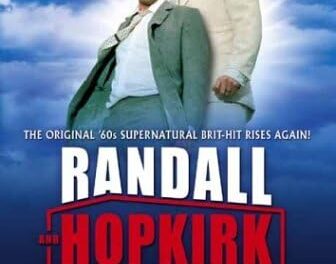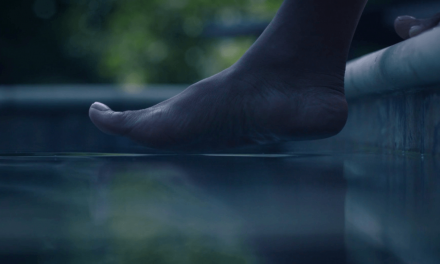Our digital TV has just updated its interface, without asking us. This confirms my long-held suspicion that TV tech has just become too complicated for TV users. This is alienating viewers. Many users now concentrate on a narrow band of potential choices, or to abandon TV for other pursuits. A huge number of users, particularly in older age groups, tend to blame themselves for their ‘technological naivete’ or clumsiness. The more teccy tend to think that, if only they spent more money on kit, then they could eliminate the tangle of wires and fixes that enable them to access the services they want.
Both views are entirely wrong. It is outrageous that a large number of consumers are made to feel inadequate by the stuff that has been sold to them. TV is a basic leisure pursuit as well as the prime means by which citizens are able to inform themselves. It is there to be accessed easily. It should not involve functions like the dual factor authentication exercise necessary for bank security, or the tangle of permissions, dashboards and non-integrated sectoral fixes that are now standard features of many workplaces. Nor should it remind anyone of Microsoft Teams after a hard day of surrogate encounters of that order. TV is “just tell me a decent story”, “tell me something I didn’t know”, “show me some interesting people doing unusual things”… or even simply “what’s on now?”.
And yet, look where we have ended up. Yes, there’s TV available to us through all kinds of routes. The promise was that this would make life easier. The reality is that it hasn’t. Too many conflicting commercial interests have muddied the waters.
The TV screen is still the best quality screen in the house for most people. No wonder a lot of people connect their laptop to the TV screen using an HDMI cable to view stuff that is only available online. It’s a simple fix. That way you can watch BoB on a TV, Mubi or Kanopy films on a decent home screen. That’s what I do. But why? My TV is internet enabled; that’s why it was able to update itself. I can access Netflix and iPlayer and All4 and even YouTube through its internet links. So why not the more specialist services that I have every right to access like BoB or Mubi?
That’s down to the equipment manufacturers. Their software doesn’t have such specialist subscription services coded into it. That’s probably because these services haven’t paid to gain access to Sony’s interface (unlike Netflix which even paid for a big white button on the remote). Why should they? It wouldn’t exactly be a priority expenditure for Learning on Screen, even if Sony asked, (which they haven’t).
But these are all internet services, and this is an internet enabled TV. I am teccy enough to have tried to access these services using the primitive web browser that lurks somewhere 10 clicks away from the TV’s initial interface. Scrolling up and down the remote control to enter web addresses and passwords one character at a time is certainly no joke. And in the end, it does not work. I wasted the duration of two sitcom episodes on this piece of research, so you don’t have to. So it is back to the laptop/HDMI cable for me. This means, of course, whenever I want to pause, it I have to do something that reminds me of the ‘get up and change the channel’ exercise of the pre-remote control analogue era. It’s the HDMI cable is not long enough to allow me to have the laptop nearby (which would create a trip hazard of course).

I have to get up to do this despite having three remote controls in front of me, all for different bits of my TV. I have Now TV, the cheapskates’ access to essential Sky programmes like Succession and Avenue 5. This requires a plug-in and a remote control all of its own. It also duplicates access to iPlayer, All 4 and even Netflix which I already have on my TV. But not Amazon Prime. Or Curzon Home Cinema. And there’s the problem. Multiple services are available through several different routes of access and interfaces even on one single TV. Which maybe is nice in principle, but it’s confusing in practice for anyone who just turns on the TV and expects to find stuff.
There are multiple channels and routes of access, but no easy way of finding out what’s on. There’s no searchable menu or catalogue of what I could access on any given day. There’s no one central interface. We lost something important when we waved goodbye to scheduled linear services: the ability to look at a scheduling grid in a publication like Radio Times or TV Times and see what is and will be available. We lost the ability to get an overview, to find our way about, to encounter accidentally… not accidentally on the screen, but accidentally in advance through such so-called ephemera.
This is not nostalgia for the old days of the period of availability. That was still a mass TV which prevented many voices and visions from ‘cutting through’. But that period did have one thing sorted: TV was simple to operate. Anyone could do it. One remote control did everything and had a super-simple up/down button for scrolling through channels. In many households, according to research in the 1980s, the control of that single remote for the single TV in the house was a battleground. It was a battle that all too often was won by the patriarch of the household. Nowadays we pride ourselves on living in more egalitarian and enlightened times… except that the current state of TV tech has left many households just as divided… and maybe even more divided.
“I can’t work the TV” is a frequently heard complaint nowadays, along with “I know we’ve got that programme, but I just don’t know how to find it”. It is too often women and girls who do not understand the TV tech in their own households. and too often the elderly who also find themselves locked out of their own TV services. It’s not their inadequacy. It is the inadequacy of the TV system that has grown exponentially and chaotically in the internet era. It is a systemic inadequacy that restricts choice whilst pretending to provide more. It creates divisions that leave society poorer and more divided.
John Ellis is Professor of Media Arts at Royal Holloway University of London. He leads the ADAPT project on the history of technologies in TV, funded by a €1.6 million grant from the European Research Council. He is the author of Documentary: Witness and Self-revelation(Routledge 2011), TV FAQ (IB Tauris 2007), Seeing Things (IB Tauris 2000) and Visible Fictions(1984). Between 1982 and 1999 he was an independent producer of TV documentaries through Large Door Productions, working for Channel 4 and BBC. He is chair of Learning on Screen and also oversees the Royal Holloway team working on EUscreen. His publications can be found HERE.






Wonderful article! Absolutely, totally agree. Just the other day, we had to help my parents retune their Freeview receivers *yet again* because of the change in channels and muxes. And I was thinking: “How often did we ever retune the TV once we got a set with a channel selector? When we moved house… and when Channel 4 was launched.” And it was a simple manual operation… not one which required playing the equivalent of a 1980s text based adventure game for five minutes first.
And – yes – HDMI from laptop to TV. That’s how we watch online content of more than 30 seconds duration. And even that’s a fag. So, look, everyone, if you’re doing online content and you want us to watch it, it needs to be *really* good.
In our case, I have to admit that we’ve used this problem to solve our other problem – i.e. not having enough time to watch everything we want to watch *anyway*. We *know* that “The Umbrella Academy” is utterly amazing from what wonderful friends have told us. But that involves us going through the faff of getting a Netflix (whatever one of those might be). And in the time that it’s taken us to Google the word “Netflix” we could simply have loaded another DVD of “The Tomorrow People” into the player and watched that instead. I suspect they’re *pretty* similar.
So, while the technological hurdles one has to jump through *are* a terrible example of digital exclusion in some respects… for lazy people like us who don’t even fancy running up to the jump, it’s rather nice to have the almost infinite field of choice narrowed down to something where we don’t spend three hours deciding which half-hour show to watch…
And – yes – I know – that in itself may well be a dangerous path to start down…
Must dash. Looks like Jedikiah is up to his old tricks again…
All the best
Andrew
I am 70. I can retire a house. I understand thermodynamics. I can speak several languages and discuss postmodernism. Why can’t I work my smart tv? I can’t even watch services I’ve subscribed to. I know why suppliers of the items in this smart tv infrastructure avoid any face to face contact with customers. There would certainly be violence, probably murder.
How can the technology be so awful? What has happened to the settled patter of my generation where technology reliability made life better…until now. There must be misaligned incentives here which are delivering sub optimal outcomes. At the moment it’s consumers like me getting a poor deal. But long term the commercial price will fall on suppliers like LG and Samsung. Why are they and the service suppliers determined to kill off “watching the box” in the traditional way?
I am also degree level educated and understand quantum electrodynamics among other things. I have no clue how my tv works, or through which wires or aether the signal comes. If it goes wrong I have to spend a whole day working it out from first principles. None of it is intuitive.